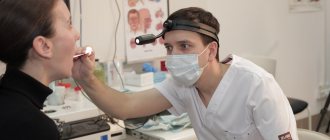Pulmonary hemorrhage: types, treatment
We are talking about a dangerous complication of various pathologies of the respiratory system, which is accompanied by the leakage of blood from the vessels located in the bronchi or lungs and its release.
Characteristic manifestations of the syndrome:
- Cough, which produces blood, liquid scarlet or in the form of clots;
- State of weakness;
- State of dizziness;
- Reduced blood pressure;
- Fainting state.
In order to identify the cause of the syndrome, various diagnostic methods are used, for example, radiography, tomography, bronchoscopy, etc.
To stop the syndrome, various treatment methods are used, including conservative hemostatic therapy and surgical treatment.
The syndrome is typical for lung oncology, as it occurs in half of patients.
The intensity of the syndrome varies: its severity is estimated from 600 ml to more than a liter of blood loss per day.
Coughing up blood: causes of illness in adults
In some cases, when the cough is strong, dry and hysterical, a small amount of scarlet blood in the sputum may be the result of damage to small superficial vessels in the bronchi, pharynx or trachea. This phenomenon is not dangerous if it is not accompanied by other alarming signs. However, if the cough does not subside, the symptoms increase, the volume of blood is significant, or the streaks do not disappear, this may be a sign of serious problems and illnessesSource: EarwoodJS, ThompsonTD. Hemoptysis: evaluation and management // Am Fam Physician. 2015 Feb 15;91(4):243-9..
Causes of hemoptysis
There are many reasons for the appearance of hemoptysis, even a long stay in a room with hot, dry air can provoke a cough with bloody sputum. But in most cases, this is a sign of a serious pathology that requires qualified examination and therapy.
Pulmonary tuberculosis
Hemoptysis is a characteristic sign of pathology. A patient with this diagnosis coughs up purulent-bloody sputum. The blood has a brown tint. The appearance of foaming blood and scarlet clots indicates the onset of bleeding. Hemoptysis is characterized by a chronic course or occurs in relapses.
Pathologies are also typical: profuse sweating at night, fever, sudden loss of body weight, constant cough.
Neoplasms of the lungs and bronchi
Tumors of the respiratory tract are often accompanied by hemoptysis. The symptom is the result of growth of a neoplasm into the vessels of the bronchial wall, compression of the arteries. In case of tumor pathologies, it is the periodic appearance of hemoptysis that is the reason for contacting a specialist. This disorder may be a sign of the development of the following diseases:
- bronchogenic cancer. Moderate hemoptysis is accompanied by the following symptoms: shortness of breath, rapid weight loss, chest pain, severe cough. At risk are men over 40 years of age with a long history of smoking;
- bronchial adenoma. The pathology is characterized by a strong dry cough accompanied by wheezing;
- pulmonary hemangioma. Often, with vascular neoplasms, shortness of breath is observed, or the pathology is asymptomatic. Hemoptysis is a serious disorder that accompanies coughing. Occurs during physical effort and recurs periodically;
- other lung tumors. The symptom is observed with plasmacytoma, sarcoma, bronchioloalveolar cancer, as well as with the growth of metastases into the lungs.
Lung endometriosis
The pathology is characterized by the appearance of symptoms during menstruation. The volume of blood secreted depends on the intensity of menstruation. It can be minimal or abundant, causing anemia. During pregnancy, hemoptysis stops, but abortion can cause it to become more frequent and more profuse.
Pneumonia
Various forms of pneumonia are characterized by hemoptysis. Initially, general signs of the disease appear - weakness, chills, fever, shortness of breath. As it progresses, a cough with hemoptysis is observed.
Pneumonia happens:
- lobar. In this type of disease, hemoptysis is not profuse and appears on the second day from the onset of development. Sputum mixed with brown or brown blood;
- Friedlander's pneumonia. The pathology is extremely difficult and is accompanied by severe fever, intoxication, the presence of hemorrhages on the skin and mucous membranes, and pain in the side appears when inhaling. With this type of pneumonia, a hacking cough is observed with the release of bloody, viscous sputum with an unpleasant odor;
- hemorrhagic pneumonia. There is a copious discharge of bright red foamy secretion when coughing;
- suppurative pathologies of the lungs. The breakthrough of pus from the lesion during gangrene or abscess of the lung provokes injury to the blood vessels. Purulent-bloody sputum with a fetid odor. Accompanied by severe chest pain, intoxication, fever, shortness of breath;
- another. Attacks of painful coughing with the release of brown sputum occur with the gasoline type of pathology. Purulent-bloody secretion appears in microplasma and onitotic forms of pathology.
Infestations caused by parasites and fungi
A complication of pulmonary forms of helmitosis is expressed in the appearance of hemoptysis. Heoptysis develops as a result of the movement of parasites through the lungs. During a cough, purulent-bloody sputum is released, accompanied by shortness of breath and bronchospasms. Hemoptysis occurs due to fungal infestations. It is episodic in nature. Bloody inclusions are observed in coughed up sputum. Accompanied by a hacking cough, shortness of breath, fever.
Bronchial pathologies
Various bronchial pathologies are accompanied by a cough with bloody discharge. There are:
- bronchitis. With exacerbation of the chronic form and acute course, a cough appears with the release of blood. There is a small number of veins in the purulent-mucous sputum;
- bronchiectasis. The release of purulent-bloody secretion when coughing is observed during exacerbation of inflammation;
- presence of a foreign body in the respiratory tract. Often, hemoptysis for this reason occurs in children. Manifests itself in the form of attacks of severe coughing with bloody discharge;
- broncholithiasis. Severe, recurrent attacks of hemoptysis may occur;
- bronchial fistulas. The symptom may be accompanied by vomiting and bloody discharge.
Cardiovascular pathologies
Hemoptysis is one of the symptoms of some cardiovascular diseases:
- pulmonary embolism. In pathology complicated by pulmonary infarction, bleeding appears when coughing. Characterized by shortness of breath, which intensifies when a person stands, pain in the side of the sternum, and fever. Expressed as the presence of clots or a small amount of blood in the expectorated secretion;
- pulmonary edema. Develops with arrhythmia, myocarditis, myocardial infarction. Appears as foamy pink sputum. Accompanied by attacks of hacking cough and suffocation;
- pulmonary hypertension. The nature of the symptoms in this pathology is mild or moderate;
- PA aneurysm. Gradually increasing hemoptysis is a harbinger of rupture of a pulmonary aneurysm. Occurs with physical stress, severe coughing, or for no reason.
Injuries of the lungs and bronchi
Violation of the integrity of the arteries due to trauma to the respiratory tract can provoke hemoptysis. Appears immediately after damage, or after some time, can be one-time, or appear periodically.
Highlight:
- endobronchial manipulation. Hemoptysis is accompanied by moderate or slight bleeding; it can occur when the bronchial mucosa is damaged during the collection of biomaterial;
- Tramming of lung tissue. Hemoptysis can be caused by rib fractures, knife or gunshot wounds. There is intense pain in the sternum.
Autoimmune diseases
One of the signs of vasculitis complicated by vascular lesions of the lung is a cough with bloody discharge. Manifests itself in relapses.
Hereditary and congenital pathologies
Morphological changes and impaired lung function can provoke hemoptysis. These include:
- cystic fibrosis. The pathology is accompanied by symptoms of chronic pneumonia: cough with bloody thick sputum, chills, difficulty breathing, shortness of breath;
- hereditary telangiectasia. The pathology is characterized by spontaneous hemoptysis;
- lung malformations. The symptom occurs during an exacerbation due to intoxication and inflammation.
Blood pathologies
In hematological disorders, bleeding during coughing rarely occurs. Pathologies in which symptoms may occur:
- coagulopathy. Occurs spontaneously and recurs periodically;
- leukemia Hemorrhages into the lung tissue are provoked by the appearance of bloody discharge when coughing;
- complications of anticoagulant therapy. An overdose can cause blood to appear.
What diseases are typical for hemoptysis?
The appearance of sputum with blood when coughing is called hemoptysis, it is possible with various diseases:
- COPD with severe bronchitis or emphysema;
- pneumonia (acute or exacerbation of chronic);
- tuberculous lesions of the lungs and bronchi;
- cancerous tumor in the lungs;
- injuries to the chest and lung tissue.
In addition, impurities of blood in coughed up mucus are possible with lesions of the nasopharynx (including nosebleeds) and the upper parts of the digestive tract.
If cough or hemoptysis appears, even without fever, it is important to consult a doctor. This is especially dangerous if symptoms such as fever, shortness of breath, severe weakness, pain in the body or limbs appear against the background of coughing up blood. You need to call an ambulance immediately. Such an attack may be a symptom of a serious illness. It is important to immediately determine the correct diagnosis and begin treatment. Source: K. Krenev, Ya Kabysh, O Yudin. Difficult patient or patient with hemoptysis // Sciences of Europe, 2021, No. 48, pp. 17-22.
Diagnosis of hemoptysis (sputum with blood), cough with blood
The cause of this symptom is usually determined using the following diagnostic methods:
- Chest X-ray - reveals the presence of dark spots in the lung (pneumonia, abscess), embolism or tumor processes;
- CT (computed tomography) – allows you to more accurately determine the processes occurring in the lungs and the nature of the changes;
- Bronchoscopy - is a study of the lumen of the bronchi and the study of the walls to determine visible changes (tumor, abscess);
- Sputum analysis - allows you to diagnose tuberculosis, inflammation in the bronchi and lungs;
- General blood test - reveals the presence of inflammation in the body;
- Sweat testing – carried out if respiratory cystic fibrosis is suspected;
- Cardiography – diagnoses the presence of heart disease.
Diagnostic methods
Since coughing up blood can be a sign of a serious illness, it is important to make a diagnosis as quickly and accurately as possible. A complex of laboratory tests and necessarily radiography or CT, ultrasound or MRI are required to determine the source of bleeding, especially if it is severe enough. Sometimes blood may not come from the respiratory system, but from soft tissues, the pleural cavity or the esophagus.
A detailed medical history is important - all health problems that preceded the appearance of the cough (smoking, injuries, colds, abdominal pain, etc.). They may indicate possible causes. If the source of bleeding is in the bronchi, an additional bronchoscopy may be prescribed. All diagnostic procedures are usually performed during hospitalization in a clinic.
Kinds
It is important to see the difference between the two concepts “pulmonary hemorrhage” and “hemoptysis”. The latter is less dangerous, it is characterized by a lower volume and rate of blood release, but it can often precede bleeding. Therefore, the importance of its treatment is undeniable.
The classification, which has been used since 1990, distinguishes three degrees of bleeding:
- The first stage is daily blood loss from 50 to 100 ml;
- The second stage is daily blood loss from 100 to 500 ml;
- The third stage is daily blood loss of more than 500 ml.
The condition of heavy bleeding, which occurs simultaneously or over a short period, is extremely dangerous. So, in a severe form of the syndrome, the immediate blood loss can be more than 100 ml.
The difference between “hemoptysis” and “pulmonary hemorrhage” is also important because the first does not frighten the oncologist, he simply makes adjustments to the treatment, while the second requires urgent help, often resuscitation.
Treatment
It is important to remember that hemoptysis is only a symptom. It is important to treat the underlying condition and make efforts to stop the bleeding. If these are inflammatory processes (pneumonia, bronchitis), a course of antibiotics and anti-inflammatory therapy in combination with drugs to regulate blood clotting are indicated. Regular cleansing of the bronchi from bloody sputum (sanitation) is also indicated.
If this is a tuberculosis lesion, anti-tuberculosis therapy is necessary, including surgical interventions on the affected lesions (cavities). For injuries and abscesses, the solution to problems is surgery; for cancerous lesions, tactics are selected individually, depending on the stage. Source: Ittrich H, Bockhorn M, Klose H, Simon M. The Diagnosis and Treatment of Hemoptysis // The Diagnosis and Treatment of Hemoptysis.Dtsch Arztebl Int. 2017 Jun 5;114(21):371-381. doi: 10.3238/arztebl.2017.0371..
1.General information
First of all, a few general words should be said about those situations when a person sees his own blood outside the body. If this is a medical procedure (for example, blood sampling for clinical analysis), or a superficial scratch (which, however, must also be aseptically treated to avoid infection), or menstrual blood in women (without any deviations from the established cycle) - worry, Of course it's not worth it.
But any other appearance of blood, even in small or barely noticeable quantities (any signs of hemorrhage, bleeding ulcers, “leaking” effusion, etc.) is in all cases a serious situation, requiring consultation, examination and medical intervention, and often ( depending on a number of circumstances), assistance should be provided not just “in the near future,” but on an urgent or emergency basis.
This is especially true for massive blood impurities in urine, feces or expectorated sputum: such phenomena never arise “just like that” - this is a symptom, and in medicine it is considered one of the most formidable.
Coughing up blood, tasting or having blood in the mouth can have many different causes.
Some of them may not pose an immediate threat to life and health. But this is one of those cases when it is definitely better to make a mistake like a “false alarm” by visiting or calling doctors “in vain” than to waste precious time and bring the situation to a critical or irreversible point.
A must read! Help with hospitalization and treatment!
Prevention
The main methods of preventing hemoptysis are preventing the pathologies that cause it. Quitting smoking, maintaining a healthy lifestyle, regular exercise, and timely treatment of colds are important.
Sources:
- Earwood JS, Thompson TD. Hemoptysis: evaluation and management // Am Fam Physician. 2015 Feb 15;91(4):243-9.
- Ittrich H, Bockhorn M, Klose H, Simon M. The Diagnosis and Treatment of Hemoptysis // The Diagnosis and Treatment of Hemoptysis.Dtsch Arztebl Int. 2021 Jun 5;114(21):371-381. doi: 10.3238/arztebl.2017.0371.
- K. Krenev, I am Kabysh, O Yudin. Difficult patient or patient with hemoptysis // Sciences of Europe, 2021, No. 48, pp. 17-22
Diagnostics
To determine the syndrome, an examination by an ENT specialist is necessary. That is, it is necessary to understand the nature of the bleeding, because its causes can be not only the lungs, but also the mucous membrane and the stomach.
Main types of diagnostic tests:
- X-ray;
- Computed tomography using contrast.
If it is impossible to find the source of bleeding, bronchoscopy is performed. The method can also be used as a therapeutic method, especially when there is a threat to the patient’s life.
Angiography is another diagnostic method. It is often resorted to when the syndrome is minor and its source has been identified.
What should you tell your doctor?
Describe the discharge. How much blood is there in the mucus - is it a few drops, or is there blood with virtually no mucus? Is the blood pinkish and foamy, or is it an almost black clot? Is coughing up blood accompanied by pain in the throat or chest? Are you feeling nauseous, dizzy, or lightheaded? The doctor will definitely ask all these questions. The accuracy of the answers will directly affect the speed and accuracy of making the correct diagnosis.
If blood appears in your sputum, make an appointment with a pulmonologist. In case of an acute attack and illness, call us and immediately seek emergency medical help.
Book a consultation 24 hours a day
+7+7+78
How dangerous is this?
The danger of this condition depends on the cause. If blood in the sputum is present in the form of several “bloody streaks,” then most likely this is simply expectoration of capillaries that have weakened due to illness or excessive physical exertion. If this is the first and only case, there is no danger to health, but you still need to consult a doctor. If these are episodic or systematically recurring attacks with the release of sputum colored in shades of red or brown, this is a reason for immediate consultation with a qualified pulmonologist. A lot often depends on the promptness of diagnosis and initiation of treatment.
2. Reasons
The most common cause of hemoptysis is diseases of the respiratory system. Here it should be remembered that a cough is a repeated spastic contraction of the respiratory muscles with forced exhalation (inhalation may be difficult and incomplete), most often caused by inflammatory, mechanical or chemical irritation of the upper respiratory tract - trachea, bronchi, larynx, as well as nasopharyngeal or pleural receptors.
Accordingly, infectious and inflammatory processes lead among the causes:
- tuberculosis;
- “smoldering” suppuration in pathologically distended incompetent bronchi (chronic bronchiectasis);
- some specific types of bacterial (less often viral) pneumonia;
- abscessing inflammatory process in the lungs;
- clinically significant bronchitis, acute or chronic.
The second most common group of causes are tumors, both malignant neoplasia in the lungs and benign formations in the bronchi (for example, adenoma).
Other reasons include:
- pulmonary thromboembolism (in turn, which can occur under the influence of various factors - thrombophlebitis, surgery, etc.);
- some types of severe cardiac pathology (rheumatism, congenital or acquired defects);
- trauma and/or foreign body in the lungs;
- diseases of the upper gastrointestinal tract;
- some genetic, autoimmune, idiopathic diseases (cystic fibrosis, Wegener's granulomatosis, hemorrhagic diathesis, pulmonary hemosiderosis, etc.).
Finally, some sources emphasize that from five to fifteen percent of cases of coughing up blood remain etiologically unclear, i.e. the cause is not identified even with a comprehensive examination.
Visit our Pulmonology page









